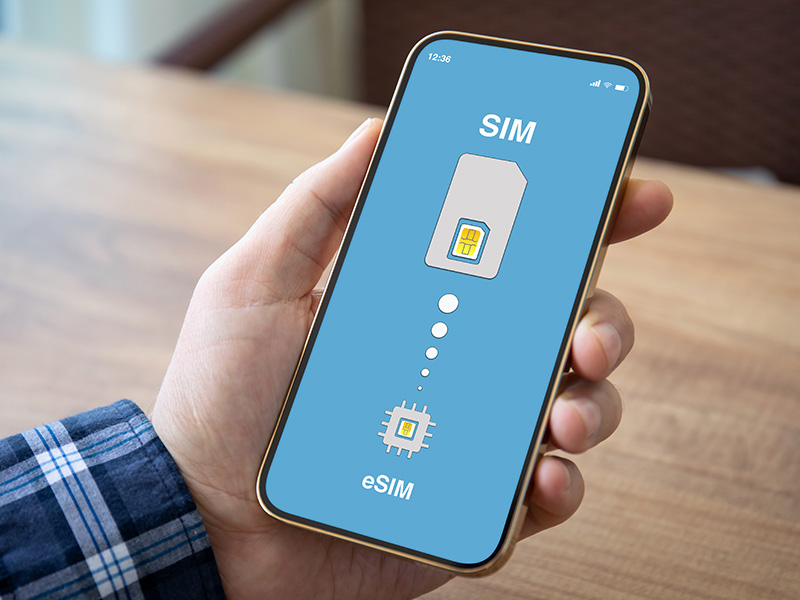
Remember that moment when you stepped off the plane, switched on your phone, and felt that twinge of anxiety about your data connection? Whether you’re a seasoned globetrotter or an occasional adventurer, international roaming costs can turn any journey into an unexpected financial adventure.
Understanding international roaming costs isn’t just about reading your carrier’s fine print—it’s about uncovering an industry built on obscure fees and markups. Let’s pull back the curtain on what’s really happening when you use your phone abroad.
The Invisible Dance of International Roaming
In an ideal travel scenario, your phone seamlessly connects to a network in Tokyo, Paris, or Sydney. But behind that simple connection lies a complex web of agreements and markups that most travelers never see. Your home carrier and the local network have already done an intricate dance of negotiations, setting prices that often have little connection to the actual cost of keeping you connected.
The actual cost of transmitting your data? It’s between 1 to 3 pence per megabyte. Yet somehow, uploading that Instagram Story from the Eiffel Tower might cost you hundreds of times more. Just ask Scotland’s Health Secretary, Michael Matheson, who made headlines with an eye-watering £11,000 phone bill from an international family trip. And he’s far from alone in experiencing this kind of shock.
Beyond the Surface: Why Your Data Costs More Abroad
The truth about roaming costs might raise your eyebrows. Imagine paying €500 for a glass of wine simply because you’re a tourist. It sounds absurd, but that’s essentially what happens with roaming charges. Here’s why:
- Secret Handshakes: Mobile carriers negotiate deals behind closed doors, setting prices without transparency.
- Limited Playing Field: With few alternatives, traditional carriers maintain high prices without real competition.
- Technical Smoke and Mirrors: While carriers do invest in roaming infrastructure, these one-time costs hardly justify ongoing premium charges.
The Global Price Tag: A World of Difference
The landscape of international roaming charges reveals stark contrasts in different parts of the world. Within the European Union, residents enjoy the revolutionary “Roam Like at Home” policy, allowing them to use their mobile devices across member states as if they had never left their home country. This freedom of connectivity offers a tantalizing glimpse of what global mobile access could look like in an ideal future.
The Pacific region tells a different story. Japanese travelers venturing to the United States often encounter significantly higher roaming fees compared to their Australian counterparts making the same journey. This disparity highlights how regional agreements and carrier relationships can dramatically impact consumer costs.
Meanwhile, Americans traveling to Europe face some of the steepest roaming charges. Yet their mobile experience improves considerably when visiting neighboring Canada and Mexico, where many carriers offer more reasonable roaming packages.
These contrasts underscore how geography and international agreements continue to shape the modern traveler’s connected experience.
Today’s Traveler, Tomorrow’s Challenge
The impact of roaming charges creates distinct challenges for different types of international travelers, each who have their own connectivity needs and constraints.
Digital nomads, who have made the world their office, face the constant challenge of maintaining reliable internet connectivity as they cross borders. Their livelihood depends on staying connected, yet they must carefully balance this necessity with the potentially devastating impact on their budget, often developing complex strategies to maintain constant access without astronomical costs.
Business travelers navigate a different set of challenges, walking the tightrope between staying productive and adhering to corporate expense policies. While their companies may cover roaming charges, they often face strict limitations and complicated reimbursement processes, forcing them to juggle between cellular data, hotel Wi-Fi, and local SIM cards to stay within policy guidelines.
For global families, roaming charges add another layer of stress to the already emotional experience of living far from loved ones. These travelers need to maintain consistent communication with family members across borders, but the financial burden of doing so can be significant, forcing many to limit their connection to precious moments of free Wi-Fi.
Adventure seekers represent yet another category. They want to share their experiences in real time through social media and stay in touch with home but without spending their entire trip hunting for Wi-Fi hotspots. They often find themselves choosing between staying connected and maintaining their spontaneous travel style, leading to creative solutions for balancing connectivity with adventure.

Smart Routes Around Roaming Roadblocks
Savvy travelers have options to stay connected without emptying their wallets:
- Embrace eSIM Technology: The digital revolution in connectivity offers flexibility and often better rates.
- Go Local: Sometimes the old-school solution of a local SIM card still wins.
- Package Smart: Research carrier travel packages (not all are created equal).
- Strategic Connectivity: Download offline maps and content before departure.
Breaking Free: The Road Ahead for Global Connectivity
The reality of international roaming goes beyond numbers on a bill. While some regions pioneer consumer-friendly approaches, many travelers still navigate a maze of hidden fees and complicated plans.
But the landscape is shifting. Innovative technologies are reshaping how we think about global connectivity. New market entrants are challenging traditional carriers’ grip on international roaming, pushing for more transparent pricing and flexible solutions that actually match how people travel and work today.
For now, staying ahead of roaming costs requires a mix of savvy planning and understanding your options. Whether you’re a digital nomad working from distant shores or a family capturing summer memories abroad, you have more choices than ever to stay connected without compromising your budget.
Reliable global connectivity shouldn’t be a luxury. It’s an essential part of modern travel. As technology evolves and competition increases, we’re moving toward a future where staying connected abroad is as natural as using your phone at home. Until then, arm yourself with knowledge, explore your options, and never let roaming fees hold your adventures back.
Smart Travel Connectivity Tips:
- Research Your Destination: Understand the local connectivity landscape and available options before departure.
- Plan Ahead: Compare international plans from your home carrier with local alternatives to find the best value.
- Check Device Compatibility: Ensure your phone is unlocked and compatible with local networks and eSIM technology.
- Download Essential Apps: Get offline maps, translation tools, and communication apps before your journey.
- Backup Important Data: Save essential documents and information locally on your device in case of connectivity issues.
The Future of Global Connection
The connectivity landscape is shifting beneath our feet, and Trek Cellular stands at the forefront of this transformation. While traditional carriers cling to outdated roaming models, we’re entering the market with innovative solutions that challenge the status quo of high roaming fees. Our eSIM technology and global connectivity platform are forcing the industry to rethink its approach to international connection.
The same technology that lets you instantly share your travel moments should work seamlessly across borders, and that’s exactly what Trek Cellular delivers. We believe the future of roaming isn’t simply about lower prices but about reimagining how we stay connected in a world where borders mean less and less. By partnering with carriers worldwide and leveraging cutting-edge eSIM technology, we’re building a network that travels with you, not against you.
The world is your office, your playground, and your gallery. Your connection should keep up with you, not hold you back. The future of global connectivity is coming, and it’s looking a lot more traveler-friendly than its past.
Whether you’re a digital nomad working from different continents, a business traveler hopping between meetings across countries, or a tourist sharing adventures with loved ones back home, Trek Cellular ensures you stay connected without the traditional barriers of roaming fees and network restrictions.
Sources:
CNET – Traveling Is Stressful Enough. Here’s How to Avoid Roaming Phone Charges


